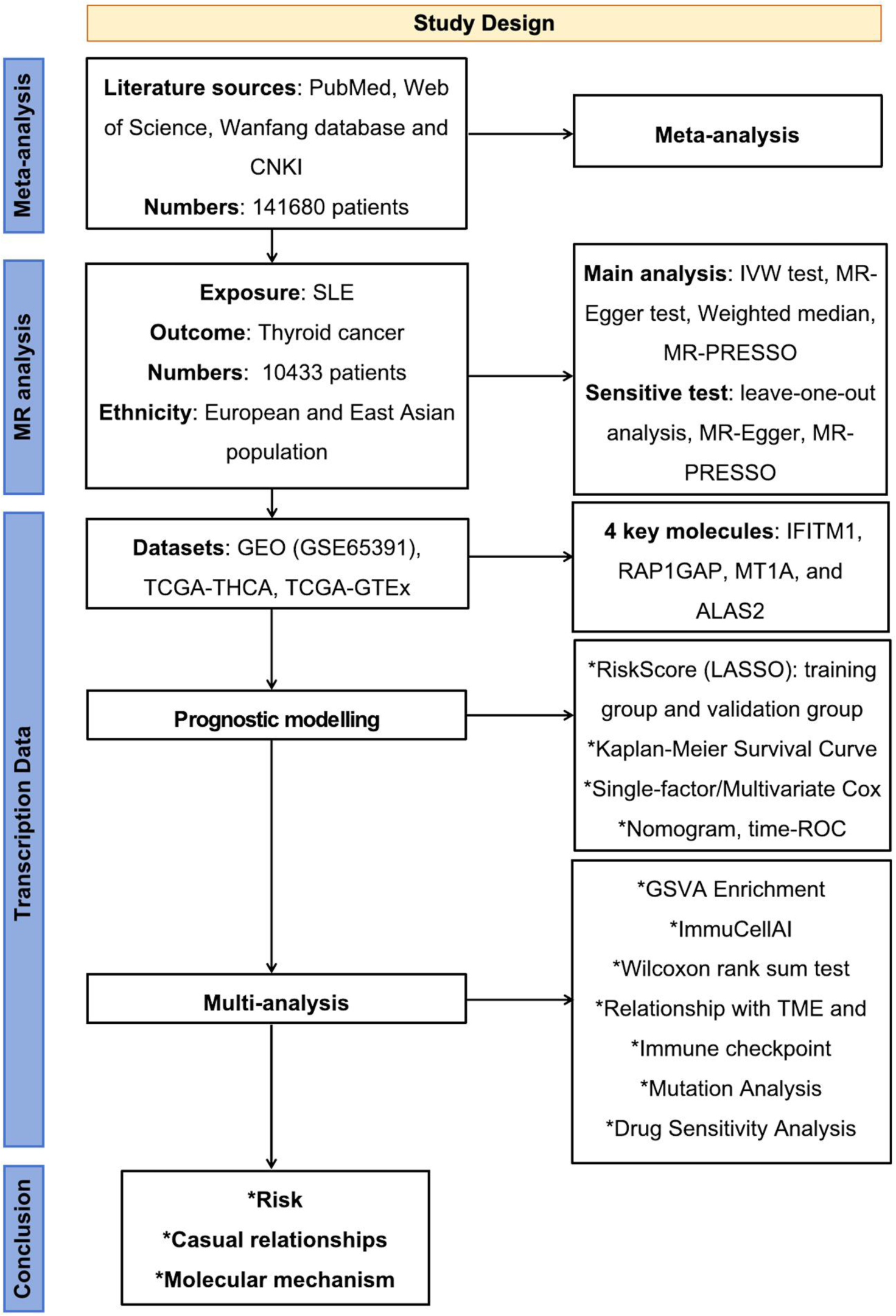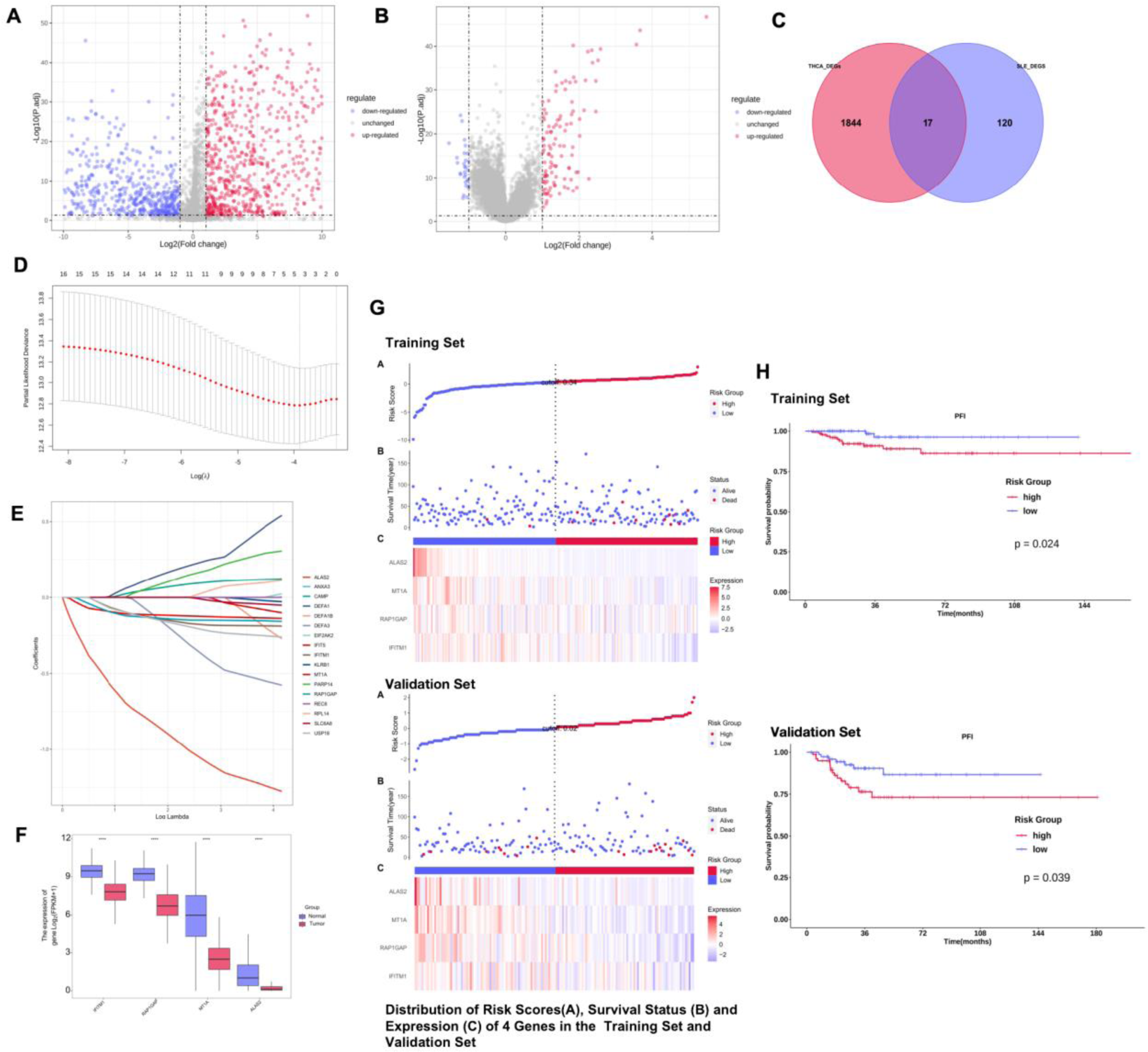

Background: The relationship between Systemic Lupus Erythematosus (SLE) and Thyroid Cancer (TC) has been extensively explored through numerous studies, however, the results of the different observational cohorts are still controversial. Existing research predominantly relies on clinical findings, with limited insight into the genetic aspect. Further investigation at the genetic level is crucial for a comprehensive understanding of the SLE-TC relationship.
Objectives: To determine the causal relationship between SLE and TC risk, and to investigate the co-pathogenesis between them.
Methods: Meta-analysis was first performed to investigate the association between SLE and the risk of TC. MR analysis was then conducted to determine the potential causality between SLE and TC. Sensitivity analyses were applied to validate the reliability of MR results. Transcriptomic data analyses based on the databases were finally performed to identify and construct a SLE-related gene signature (SLEscore).
Results: The pooled estimate showed a significantly increased overall SIR for TC in SLE of 1.66 (95% CI: 1.35-2.04). The MR analysis demonstrated that genetic predisposition to SLE was casually associated with the increased risk of TC in the European cohort (OR= 1.388, 95% CI: 1.072-1.798, P=0.013). However, no casual associations were observed in the East Asian population. Furthermore, sensitivity analyses proved the robustness of the present MR results. A prognostic SLEscore consisting of four SLE-related genes (IFITM1, RAP1GAP, MT1A, and ALAS2) could distribute patients with TC into the high- and low-risk groups according to survival rates with good predictive ability both in training group and validation group (P<0.05).
Conclusion: Our MR study provided evidence that genetic changes in SLE were significantly associated with the increased risk of thyroid cancer in the European population, while no causality was found in the East Asian cohorts. Transcriptome data analyses indicated that the SLEscore could serve as a novel biomarker for predicting prognosis when TC and SLE coexisted in patients.
REFERENCES: NIL.
Overview of study design.

Details of GWASs analyzed in the present MR analyses.
| Data source | Phenotype | Sample size | Number of patients | Ethnicity |
|---|---|---|---|---|
| ebi-a-GCST003156 | Systemic lupus erythematosus | 14,267 | 5,201 | European |
| ebi-a-GCST90011866 | Systemic lupus erythematosus | 12,653 | 4,222 | East Asian |
| ieu-a-1082 | Thyroid cancer | 1,080 | 649 | European |
| ebi-a-GCST90018709 | Thyroid cancer | 178,723 | 361 | East Asian |
MR estimates of the casual relationships between SLE and TC.
| Exposure | Ethnicity | nSNPs | IVW method | |
|---|---|---|---|---|
| OR (95% CI) | P value | |||
| Systemic lupus erythematosus | European | 8 | 1.388 (1.072-1.798) | 0.013 |
| Systemic lupus erythematosus | East Asian | 292 | 1.000 (0.997-1.003) | 0.999 |
| Thyroid cancer | European | 28 | 1.053 (0.942-1.178) | 0.361 |
| Thyroid cancer | East Asian | 2 | 970 (0.894-1.052) | 0.464 |
Identification of SLE−related DEGs in patients with TC, construction and verification of the prognostic model

Acknowledgements: NIL.
Disclosure of Interests: None declared.